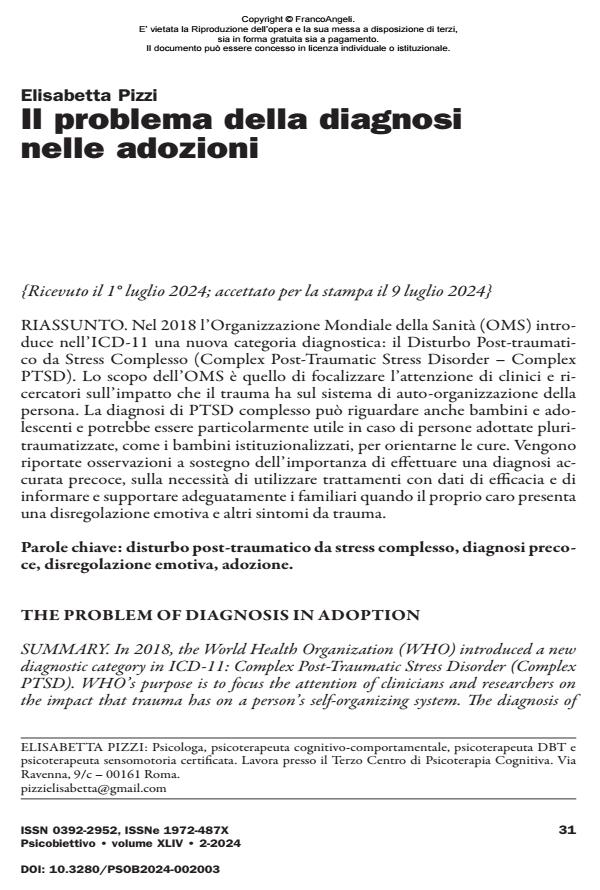Il problema della diagnosi nelle adozioni
Titolo Rivista PSICOBIETTIVO
Autori/Curatori Elisabetta Pizzi
Anno di pubblicazione 2024 Fascicolo 2024/2
Lingua Italiano Numero pagine 18 P. 31-48 Dimensione file 652 KB
DOI 10.3280/PSOB2024-002003
Il DOI è il codice a barre della proprietà intellettuale: per saperne di più
clicca qui
Qui sotto puoi vedere in anteprima la prima pagina di questo articolo.
Se questo articolo ti interessa, lo puoi acquistare (e scaricare in formato pdf) seguendo le facili indicazioni per acquistare il download credit. Acquista Download Credits per scaricare questo Articolo in formato PDF

FrancoAngeli è membro della Publishers International Linking Association, Inc (PILA)associazione indipendente e non profit per facilitare (attraverso i servizi tecnologici implementati da CrossRef.org) l’accesso degli studiosi ai contenuti digitali nelle pubblicazioni professionali e scientifiche
Nel 2018 l’Organizzazione Mondiale della Sanità (OMS) introduce nell’ICD-11 una nuova categoria diagnostica: il Disturbo Post-traumatico da Stress Complesso (Complex Post-Traumatic Stress Disorder – Complex PTSD). Lo scopo dell’OMS è quello di focalizzare l’attenzione di clinici e ricercatori sull’impatto che il trauma ha sul sistema di auto-organizzazione della persona. La diagnosi di PTSD complesso può riguardare anche bambini e adolescenti e potrebbe essere particolarmente utile in caso di persone adottate pluritraumatizzate, come i bambini istituzionalizzati, per orientarne le cure. Vengono riportate osservazioni a sostegno dell’importanza di effettuare una diagnosi accurata precoce, sulla necessità di utilizzare trattamenti con dati di efficacia e di informare e supportare adeguatamente i familiari quando il proprio caro presenta una disregolazione emotiva e altri sintomi da trauma.
Parole chiave:disturbo post-traumatico da stress complesso, diagnosi precoce, disregolazione emotiva, adozione.
Elisabetta Pizzi, Il problema della diagnosi nelle adozioni in "PSICOBIETTIVO" 2/2024, pp 31-48, DOI: 10.3280/PSOB2024-002003